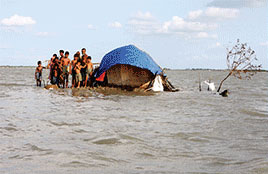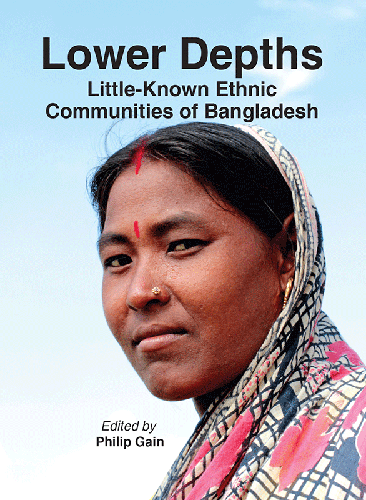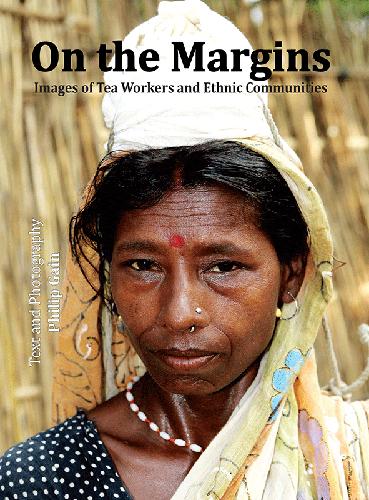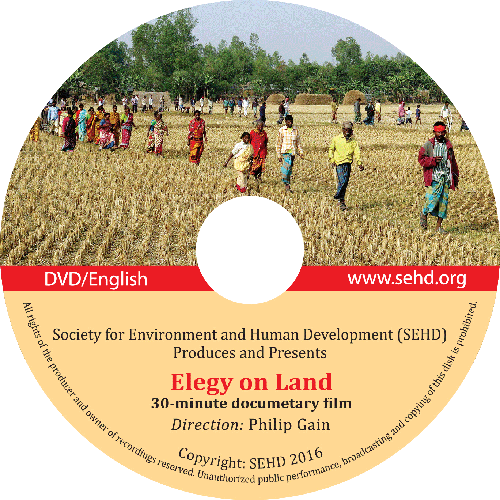August 22, 2016
LGED Auditorium, LGED Bhaban,
Agargaon, Dhaka-1207
INVITATION LETTER [PDF]
Organized by
Society for Environment and Human Development (SEHD), Power and Participation Research Centre (PPRC), Christian Commission for Development in Bangladesh (CCDB) and Gram Bikash Kendra (GBK)
The moral urgency of Sustainable Development Goals (SDGs) lies in four fundamental words–LEAVING NO ONE BEHIND. While Bangladesh has commendable progress on many fronts, the twin problems of marginalization and exclusion continue to haunt a wide range of ethnic minorities, particularly from the plains land and other excluded groups. Society for Environment and Human Development (SEHD) in partnership with Power and Participation Research Centre (PPRC), Christian Commission for Development in Bangladesh (CCDB) and Gram Bikash Kendra (GBK) and with support from the European Union and ICCO Cooperation have launched a multi-year initiative to define the excluded groups, map their current status, and strengthen their capacity and partnerships.
A national workshop to share initial findings and facilitate a national conversation on key issues has been arranged for Monday, 22 August, 2016 at 10 a.m. at the LGED Auditorium, Agargaon. Dr. Gowher Rizvi, International Affairs Advisor to Honourable Prime Minister will be present as the Chief Guest. Professor Wahiduddin Mahmud, Ms. Hameeda Hossain, Md. Abdul Karim, Harishankar Jaladas Rambhajan Kairi and Dr. Dipankar Roy will be present as Special Guests and Distinguished Speakers. Representatives of excluded communities from across Bangladesh, national policy makers, civil society, academia, media and others will participate. You are cordially invited.
Dr. Hossain Zillur Rahman Philip Gain
Executive Chairman, PPRC Director, SEHD
Joyanta Adhikari Moazzem Hossain
Executive Director, CCDB Chief Executive, GBK
PROGRAM
Inaugural Session
10:00 Registration, information fair and tea
11:00 Welcome address and project presentation
Philip Gain, Director, SEHD
11.20 Keynote on marginalization and exclusion in Bangladesh
Dr. Hossain Zillur Rahman, Executive Chairman, PPRC
11.40 Distinguished speakers
Dr. Harishankar Jaldas, Writer
Rambhajan Kairi, GS, Bangladesh Cha Sramik Union
Dr. Dipankar Roy, Deputy Director, BBS
EU Representative
12.15 Special Guests
Prof. Wahidduddin Mahmud, Eminent Economist
Dr. Hameeda Hossain, Chairperson, RIB
M. Abdul Karim, Managing Director, PKSF
12.40 Chief Guest: Dr. Gowher Rizvi, Adviser for International Affairs to Honourable Prime Minister
12.50 Chair: Professor Sakhawat Ali Khan, Chairman, SEHD
1:00 Lunch
Experience-Sharing Session
Chair: Joyanta Adhikari, Executive Director, CCDB
2:00 Sharing of experiences and insights from the ground
Eugin Nokrek, President, Joyenshai Adivasi Unnayan Parisad
Nirmal Chandra Das, GS, Bangladesh Harijon Yokkha Parishad
Rabindranath Soren, President, Jatiyo Adivasi Parishad
Shahnaz Begum, Jiboner Alo
A.K.M. Maksud, ED, Grambangla Unnayan Committee
Ashok Das, General Secretary, Bangladesh Dalit Parishad
Milon Das, Executive Director, Paritran
Tutia Bashfor, Horijon Kallyan Parishad, Rangpur
3.20 Open discussion
4:30 Vote of thanks, Moazzem Hossain, chief executive, Gram Bikash Kendra
4:40 Closing tea
Contact
Society for Environment and Human Development (SEHD)
1/1 Pallabi, Mirpur, Dhaka-1216
T: +880-2-9026636, M: +8801715009123, +8801711443131
E: sehd@sehd.org, www.sehd.org
REPORT | NEWS LINKS [PDF]







